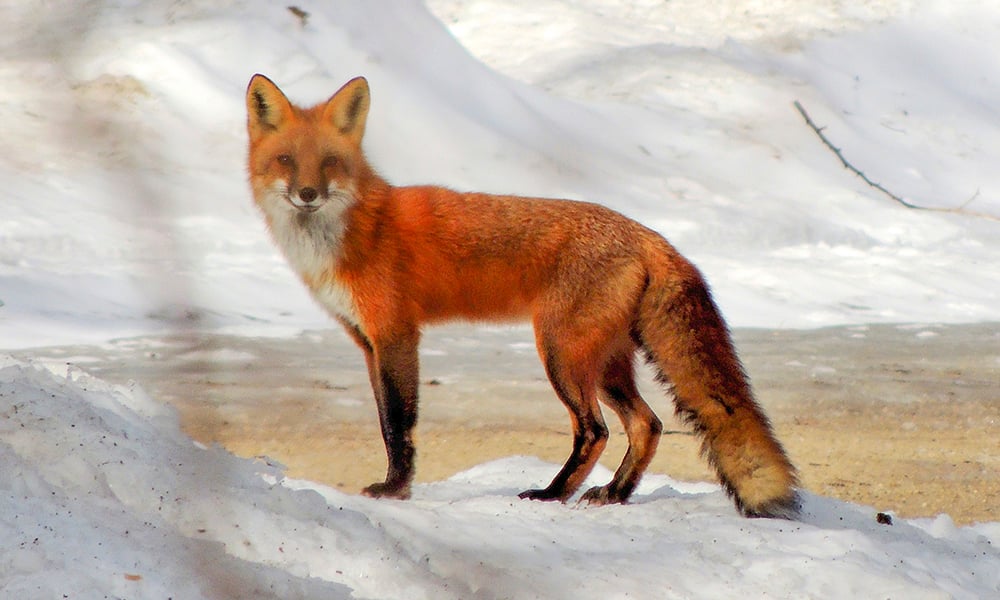
Animals in northern Illinois must face the harsh reality of cold blustery winters that leave them vulnerable to exposure and starvation.
It may be difficult to imagine weathering the brutality of winter without our heated homes, heavy clothing and other human innovations and comforts. But wildlife must find their own ways to survive the cold, dark days and nights of winter. They migrate, adjust their diets, or hibernate.
How They Do It
Birds are known to migrate long distances. What motivates them to leave the cold is not the actual dropping temperatures, but the lack of food that comes with it.
With fewer insects or flowers and limited seeds or berries, birds must find an area with ample food sources. These locations are either in the southern hemisphere or closer to the tropics. However, if you look out your window during the winter months, you probably noticed that not all our feathered friends have left, and in fact some new winter birds have just arrived.
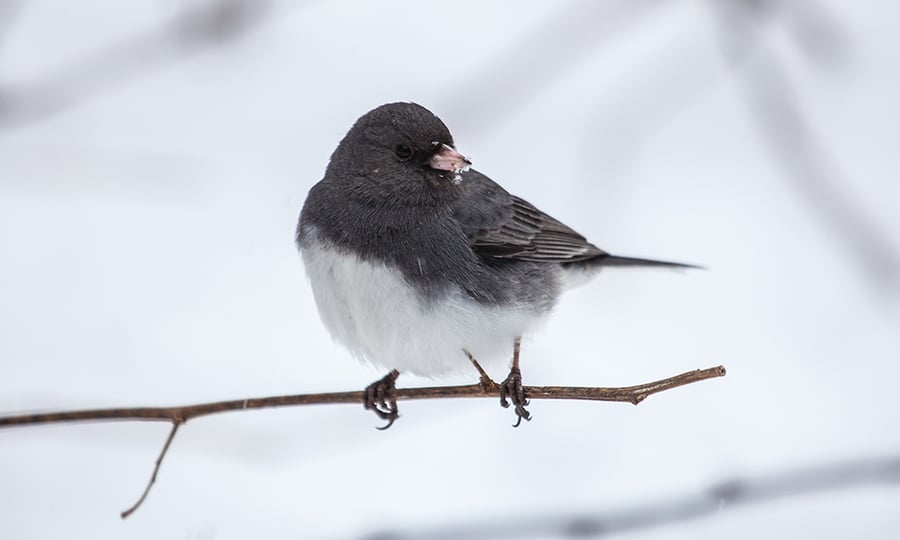
Dark-eyed juncos migrate to Illinois from the western mountains and Canada in the winter. Photo courtesy Chesapeake Bay Program/CC BY-NC 2.0.
Species like the dark-eyed junco or snow buntings are escaping even colder, darker nights farther north. Most of DuPage County’s breeding species have flown south for the winter. Food is the driving force for these migrations. Those that stay survive winter by adapting their diets.
Most birds depend on insects for protein, and some more than others. The American robin — a very common species seen in our backyards — are usually looking for invertebrates like worms during the warmer seasons.
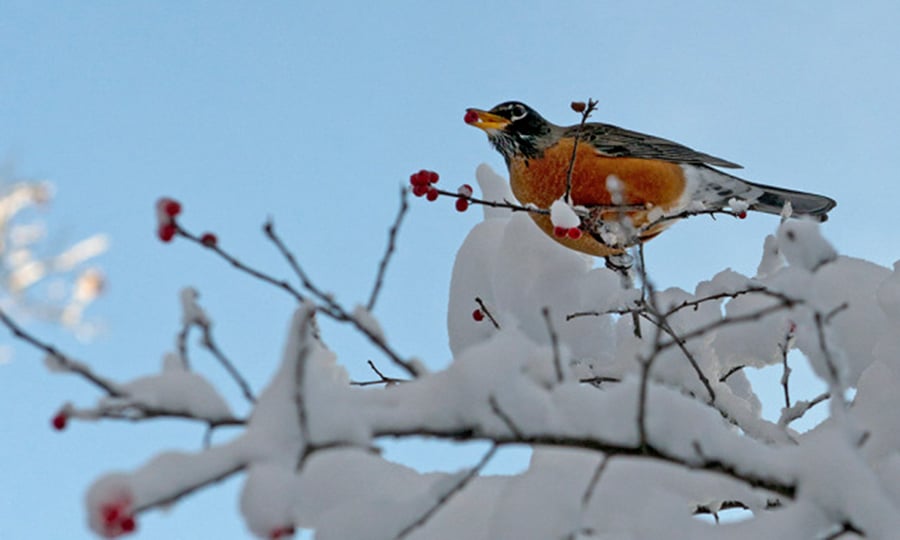
Although American robins are considered harbingers of spring, many robins spend the whole winter in their breeding range. Photo courtesy Plant Image Library/CC BY-SA 2.0.
But when the ground is frozen, they can’t chip and remove bark like a woodpecker to reach estivating (dormant) insects and cached seeds. So they flock together and forage for berries. And although some robins do migrate slightly farther south, some choose to stay and weather the winter. This gives them first dibs on prime breeding territory in spring, but it’s a risk.
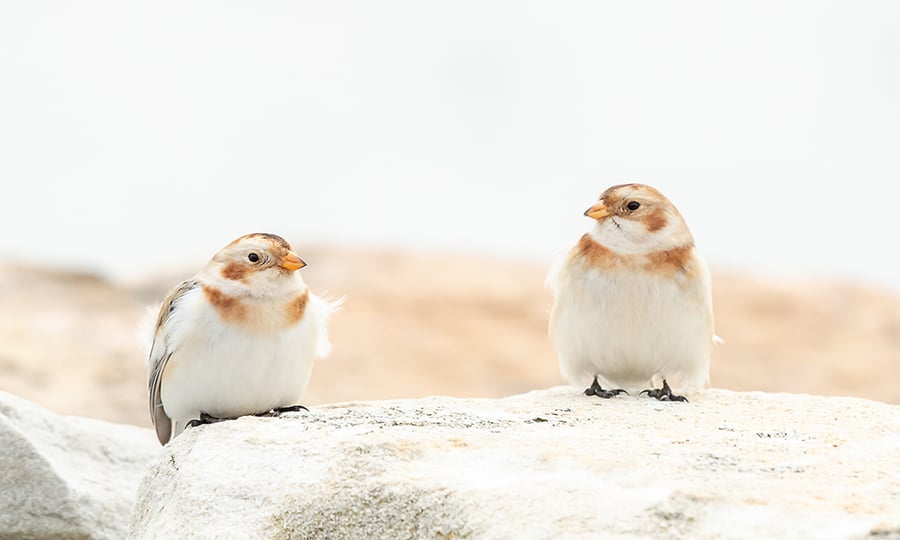
Snow buntings spend their summer breeding season in the Arctic but scatter across Canada and the United States during winter. Image by Emily Carter Mitchell/CC BY-NC 2.0.
Not Just for the Birds
Like birds, mammals must adapt to limited available food sources. Coyotes and foxes adjust their intake. They primarily eat small birds and mammals throughout the year, but they may increase consumption of dead animal carcasses during the winter months. Luckily, they have strong jaw muscles and sharp teeth that allow them to tear and crush through their frozen meals. Generalized diets and thicker fur coats help them survive the winter. Just as humans don heavier winter coats, many mammals do the same. See if you can tell the difference between a fox's winter coat and its coat during the summer months.
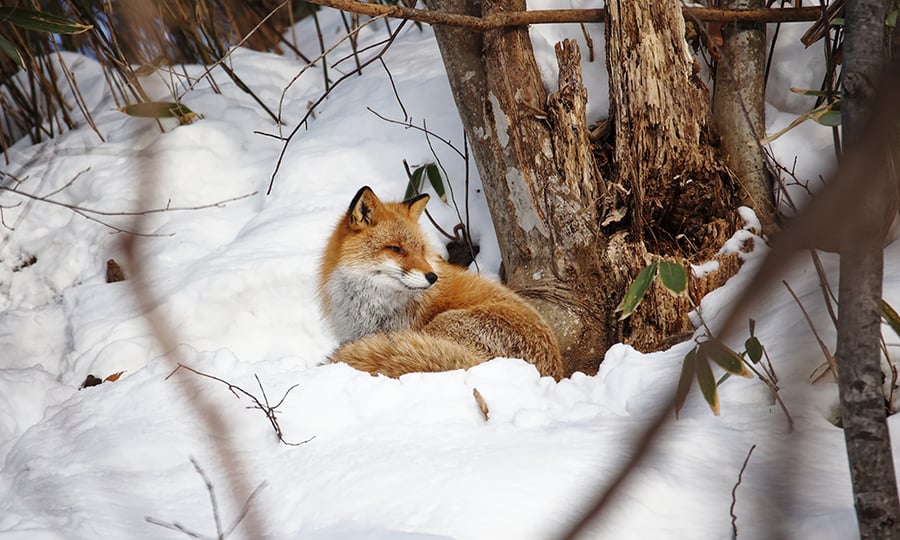
Red foxes and coyotes don heavier winter coats to help them survive the winter. Image by MIKI Yoshihito/CC BY 2.0.
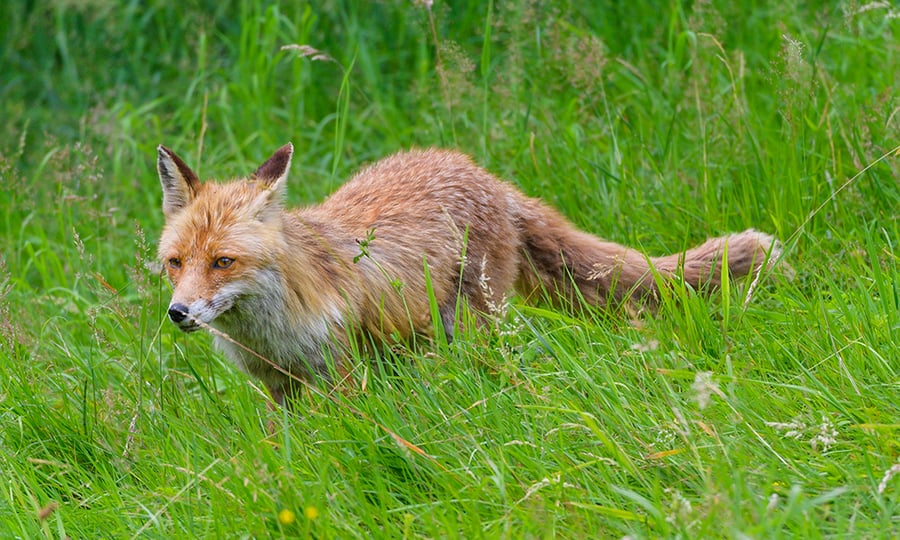
Red foxes and coyotes shed their thick winter coat in the summer. Image by Tambako The Jaguar/CC BY-ND 2.0.
Hitting the Snooze Button
Some animals have figured out how to fast-forward through winter. Imagine being able to fall asleep when the days become short and then wake up when the sun is warm, and the days grow longer. This is hibernation, brumation, and diapause.
While these terms may differ in definition, they all refer to a significant reduction in body function and activity levels. Hibernation generally refers to mammalian physiological changes that allow them to sleep through the winter. Metabolism, heart rates, core temperature, and respiration decrease.
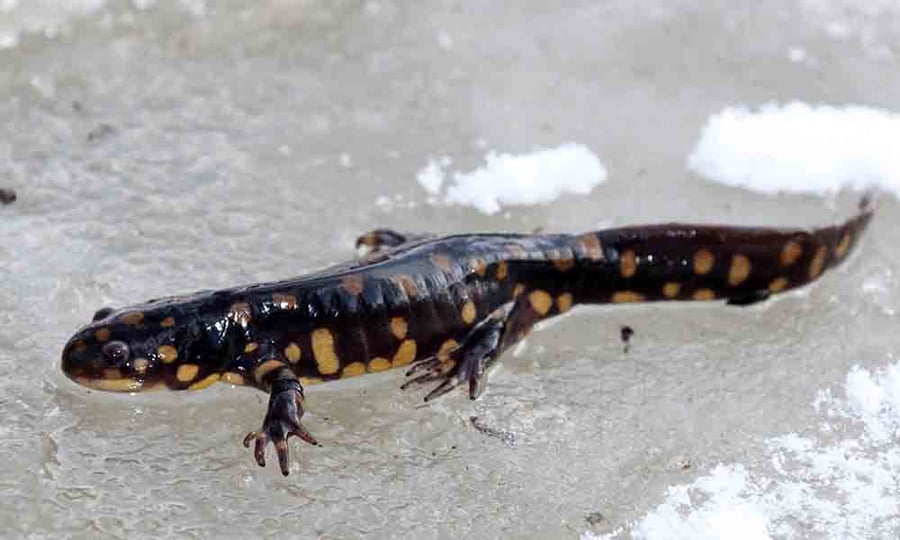
An eastern tiger salamander in early spring at Waterfall Glen. Photo courtesy Chris Bowen.
They survive off fat reserves built up during fall foraging. Read more about one of our infamous hibernators, the woodchuck, in the blog Why Groundhogs Hit Snooze on Their Holiday.
Cold-blooded vertebrates like reptiles go into a similar state known as brumation. Insects and their eggs may enter a state of diapause where their development is suspended.
Other Survival Methods
Not all animals go through significant physiological changes. Raccoons and chipmunks do not hibernate; instead, they enter a period of torpor. They’ll be inactive for extended periods of time, but then will awaken to urinate and eat. This allows them to conserve energy without the risks and vulnerability associated with true hibernation.
Winter is tough on all of us, especially our wild friends. Don’t be surprised if some of them may look to your compost piles, bird feeders, heated water bowls, porches, sheds, or hedges for food and shelter. This time of year, they are just trying to stay alive.
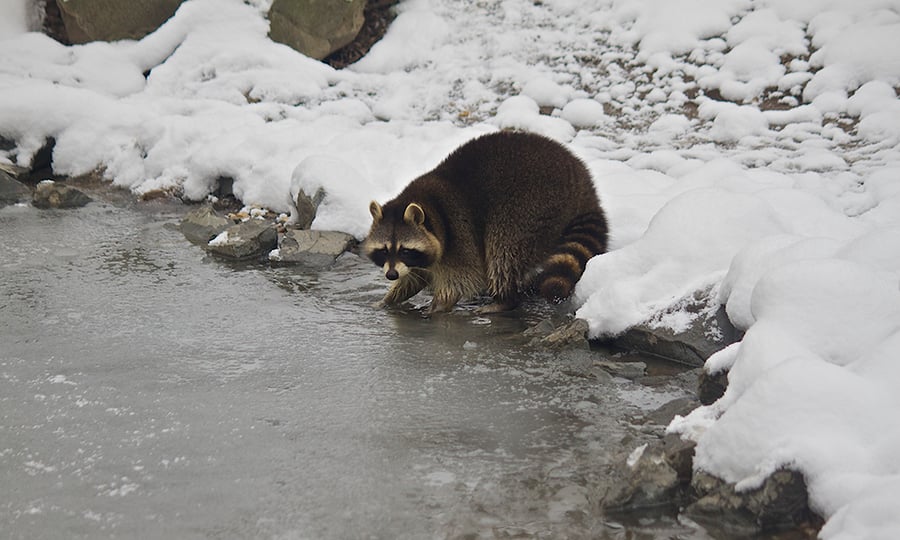
Raccoons enter a period of torpor in the winter where they're inactive for extended periods of time but awaken to urinate and eat. Image by Michelle Bender/CC BY-NC-ND 2.0.
Nate Hambel
